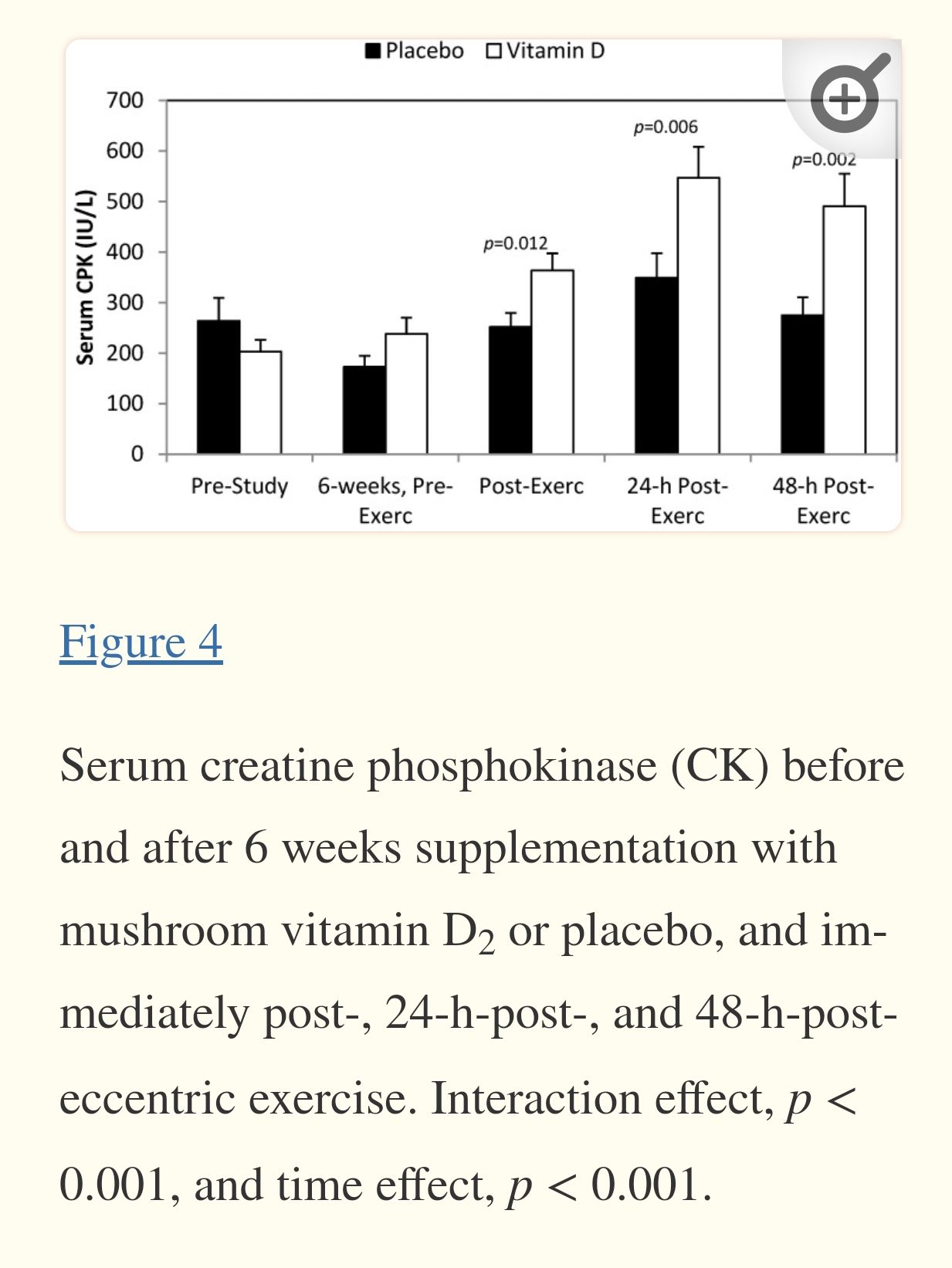Even enormous doses of vitamin D, applied topically, do not produce toxicity
-
@haidut The full study appears paywalled. I'd like to verify if they used D2 or D3 topically or (better) tested both? I've only ever used D3 orally but would love to know topically is safer.
thanks for all you do! -
@zorba990 Let me know if the following link works: The study Haidut posted
-
@NotShanalotte Yes thanks! I see the term Viosterol used which is not clear to me on D2 v D3. However based purely on the age of the study I would guess D2.
"As an inunction we made a compound of : yellow wax, 5 parts ; spermaceti, 5 parts ; viosterol in oil 250 D, 26 parts ; 5 olive oil, 10 parts, and lecithin, 0.75 parts, in a cold cream base. This mixture contained 1,800 rat units 6 of vitamin D per gram. Another compound using an irradiated mineral oil instead of viosterol was employed to determined the mechanism of the action of vitamin D by inunction. This preparation of an irradiated mineral oil is known to be a source of secondary radiation in that it is capable of fogging a photographic plate."
-
@zorba990 said in Even enormous doses of vitamin D, applied topically, do not produce toxicity:
Viosterol
Ergosterol activated by ultraviolet irradiation; vitamin D2.
A fat-soluble vitamin that prevents rickets.
https://duckduckgo.com/?q=Viosterol&ia=web -
@DavidPS thanks
So until we have more information only D2 would be safe in such high dose topical formulations as its conversion to D3 can have a limitation -
-
@zorba990 You're welcome! If you ever need to get a full study, sci-hub lets you put in a link and if there's a legal copy it'll fetch it for you.
Right now the country code is st, (sci-hub.st) but that has changed in the past and a quick search will usually find the working version.
@DavidPS thanks for posting that info!
-
https://www.sciencedaily.com/releases/2014/01/140127164559.htm
Has anyone seen this, which shows D2 supplementation in athletes resulted in poor outcomes, including lowering serum d3?
-
@NotShanalotte
Interesting. Though muscle damage is the goal to most progressive weightlifting routines as this signals adaptation and strength/size increases. The key is not training until sufficiently recovered -- so if this allows milder training to inflict more damage it might be a net positive. -
@zorba990 I was kinda thinking that. A long time ago when I did weightlifting for power (as opposed to physique or reps) I did very few reps at 70-90% capacity. Was far more efficient than the routines the weights coach had me doing. So maybe use the short half-life of D2 to coincide with a lifting session and get away with closer to the 70% and see how that ends up. I dunno, just throwing an idea out there.
-
It found a significant and prolonged increase in creatine phosphokinase after exercise. A significantly greater serum myoglobin during exercise. No difference in DOMS. This could potentially increase the stressfulness of exercise to the body, but potentially one could exercise more lightly and less frequency and get the same benefits. Along the lines of what you're saying.

-
@basebolt For sure, that's the chart I was looking at.